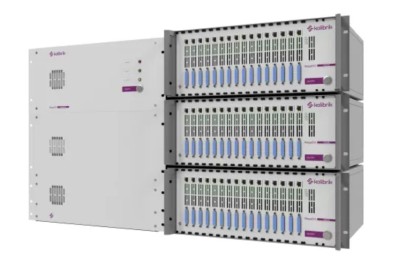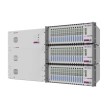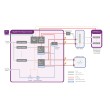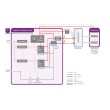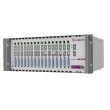Typical applications include hydrogen fuel cells, water electrolyzers, solid-oxide cells, redox-flow batteries, and lithium batteries with high-current and high-power requirements. Additionally, EIS is utilized in applied research, manufacturing testing, and quality control.
StackEIS-M product family is a precise modular testing system for EIS analysis of fuel-cell stacks
and electrolyzers. System consists of power stage which handles the power, and EIS acquisition
system which can perform impedance spectroscopy analysis at all cells simultaneously.
For fuel-cell stacks, power stage is built from EIS load modules. Your stack can have up to 1 000
cells and provide current up to 2 kA. System is designed for cooperation with external DC load
which may handle most of the stack power (up to 300 kW).
Maximum internal power dissipation of StackEIS-M power s tem is water-
cooled.
For electrolyzers, power stage is extended by internal or external power supply, so the system works as regulated power source, capable of EIS measurement.
EIS acquisition runs simultaneously on all channels, so the system is suitable for rapid and precise analysis in R&D, for QA in manufacturing, or in service diagnostics. StackEIS-M also provides DC cell voltage monitoring and enables characteriza-tion using important electrochemical methods
– Polarization Curves, Chronopotentiometry and Chronoamperometry, Load Cycling, Current Interrupt Technique, etc.
Unlock Power with EIS Analysis
Electrochemical Impedance Spectroscopy (EIS) analysis is the ultimate technique to unlock the secrets of your electrochemical devices. Whether you are working with hydrogen fuel cells, electrolyzers, batteries, or any other system that involves electric current and chemical reactions,
EIS analysis can give you a complete picture of what’s going on inside your devices. A standout feature of the EIS method is its unique ability to analyze your device seamlessly, during its standard operating conditions.


